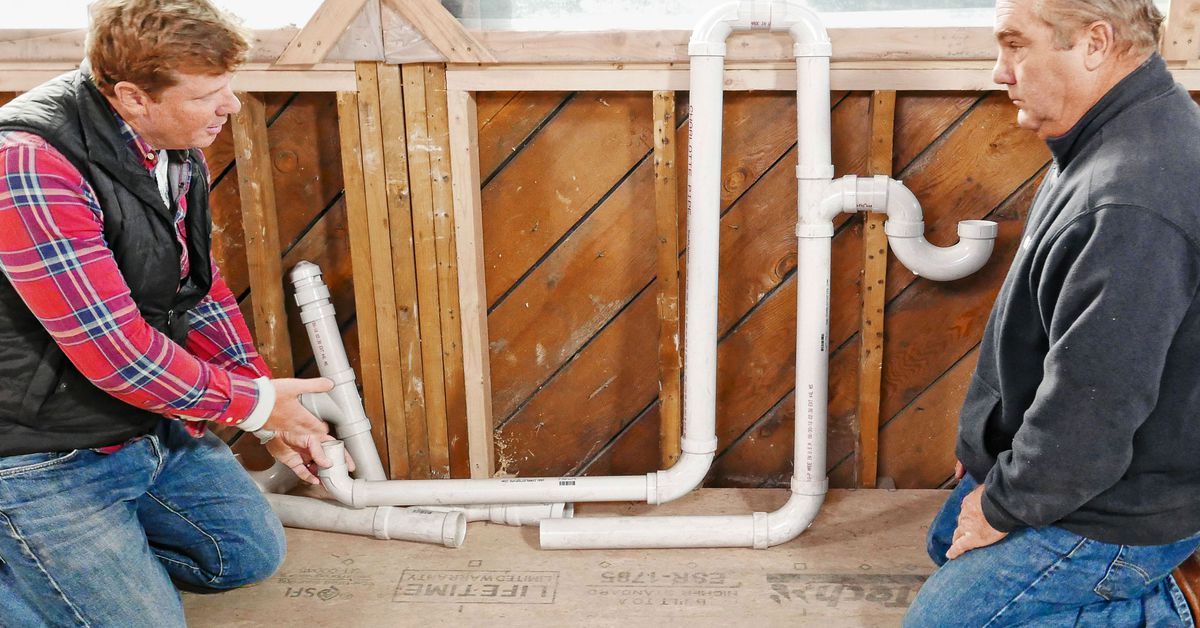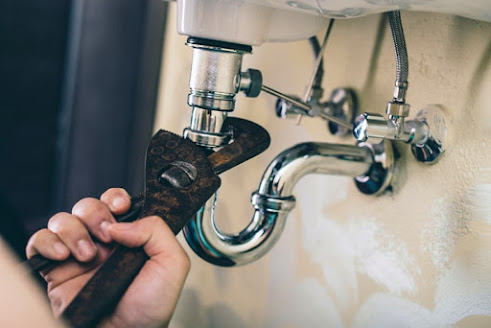Noisy Plumbing Troubles Resolved!
Visit My Web PageWhat're your thoughts and feelings about Why Do My Pipes Make Noises?

To detect loud plumbing, it is important to establish first whether the undesirable sounds occur on the system's inlet side-in various other words, when water is transformed on-or on the drainpipe side. Sounds on the inlet side have actually differed causes: excessive water pressure, worn valve as well as tap parts, incorrectly linked pumps or various other devices, inaccurately placed pipe fasteners, and plumbing runs including too many tight bends or other restrictions. Noises on the drainpipe side generally originate from bad place or, as with some inlet side sound, a format consisting of tight bends.
Hissing
Hissing noise that occurs when a faucet is opened somewhat typically signals excessive water stress. Consult your neighborhood public utility if you think this trouble; it will certainly have the ability to tell you the water pressure in your location and also can set up a pressurereducing shutoff on the inbound water system pipe if essential.
Various Other Inlet Side Noises
Creaking, squeaking, damaging, breaking, and tapping generally are triggered by the development or tightening of pipes, usually copper ones providing hot water. The sounds take place as the pipes slide against loosened fasteners or strike nearby residence framing. You can frequently determine the place of the problem if the pipelines are subjected; just adhere to the noise when the pipes are making sounds. Probably you will certainly find a loose pipeline hanger or a location where pipes exist so near to flooring joists or various other framing items that they clatter against them. Affixing foam pipe insulation around the pipes at the point of get in touch with ought to treat the issue. Be sure bands and wall mounts are secure and also offer ample support. Where feasible, pipeline fasteners need to be connected to massive structural components such as foundation wall surfaces instead of to mounting; doing so reduces the transmission of resonances from plumbing to surfaces that can magnify and move them. If attaching fasteners to framework is unavoidable, cover pipes with insulation or various other resistant material where they speak to fasteners, as well as sandwich completions of new bolts in between rubber washers when mounting them.
Remedying plumbing runs that suffer from flow-restricting limited or various bends is a last hope that needs to be carried out only after seeking advice from a skilled plumbing professional. Regrettably, this scenario is fairly typical in older residences that may not have been developed with interior plumbing or that have seen a number of remodels, specifically by beginners.
Chattering or Shrieking
Extreme chattering or shrilling that occurs when a valve or tap is activated, which usually vanishes when the installation is opened totally, signals loose or defective interior components. The remedy is to replace the valve or faucet with a new one.
Pumps and devices such as cleaning machines as well as dishwashing machines can move motor noise to pipes if they are incorrectly linked. Connect such things to plumbing with plastic or rubber hoses-never inflexible pipe-to isolate them.
Drain Sound
On the drain side of plumbing, the chief goals are to get rid of surfaces that can be struck by falling or hurrying water as well as to shield pipelines to have inescapable audios.
In brand-new construction, bath tubs, shower stalls, commodes, and also wallmounted sinks and also basins ought to be set on or against resilient underlayments to reduce the transmission of sound through them. Water-saving toilets and also taps are much less loud than standard versions; mount them rather than older kinds even if codes in your area still permit using older fixtures.
Drains that do not run up and down to the cellar or that branch right into straight pipeline runs supported at floor joists or various other mounting present especially problematic noise troubles. Such pipelines are big enough to radiate considerable resonance; they additionally bring considerable amounts of water, which makes the scenario worse. In brand-new building and construction, define cast-iron dirt pipes (the large pipelines that drain pipes bathrooms) if you can afford them. Their massiveness has a lot of the sound made by water going through them. Also, stay clear of directing drainpipes in wall surfaces shown bed rooms and areas where people collect. Wall surfaces including drainpipes need to be soundproofed as was defined earlier, using dual panels of sound-insulating fiber board and wallboard. Pipelines themselves can be covered with special fiberglass insulation created the function; such pipes have a resistant plastic skin (occasionally consisting of lead). Results are not always sufficient.
Thudding
Thudding noise, often accompanied by shivering pipes, when a tap or home appliance shutoff is shut off is a problem called water hammer. The sound and resonance are caused by the resounding wave of pressure in the water, which instantly has no place to go. Occasionally opening a shutoff that releases water swiftly into an area of piping including a restriction, joint, or tee installation can produce the very same problem.
Water hammer can usually be healed by setting up installations called air chambers or shock absorbers in the plumbing to which the trouble valves or faucets are attached. These gadgets permit the shock wave produced by the halted circulation of water to dissipate in the air they contain, which (unlike water) is compressible.
Older plumbing systems might have short upright sections of capped pipeline behind walls on tap competes the exact same purpose; these can ultimately fill with water, lowering or destroying their efficiency. The cure is to drain pipes the water system entirely by shutting off the major supply of water shutoff and opening up all faucets. After that open up the primary supply shutoff and shut the faucets one by one, starting with the faucet nearest the shutoff and ending with the one farthest away.
WHY IS MY PLUMBING MAKING SO MUCH NOISE?
This noise indeed sounds like someone is banging a hammer against your pipes! It happens when a faucet is opened, allowed to run for a bit, then quickly shut — causing the rushing water to slam against the shut-off valve.
To remedy this, you’ll need to check and refill your air chamber. Air chambers are filled with — you guessed it — air and help absorb the shock of moving water (that comes to a sudden stop). Over time, these chambers can fill with water, making them less effective.
You’ll want to turn off your home’s water supply, then open ALL faucets (from the bathroom sink to outdoor hose bib) to drain your pipes. Then, turn the water back on and hopefully the noise stops! If you’re still hearing the sound, give us a call to examine further.
Whistles
Whistling sounds can be frustrating, as sometimes the source isn’t easily identified. However, if you can pinpoint which faucet or valve that may be the cause, you’ll likely encounter a worn gasket or washer — an easy fix if you replace the worn parts!Whistling sounds from elsewhere can mean a number of things — from high water pressure to mineral deposits. Your best plan of attack here is to give our plumbing experts a call. We’ll be able to determine where the noise is coming from and what the cause may be, then recommend an effective fix!
Cracks or Ticks
Cracking or ticking typically comes from hot water going through cold, copper pipes. This causes the copper to expand resulting in a cracking or ticking sound. Once the pipes stop expanding, the noise should stop as well.
Pro tip: you may want to lower the temperature of your water heater to see if that helps lessen the sound, or wrapping the pipe in insulation can also help muffle the noise.
Bangs
Bangs typically come from water pressure that’s too high. To test for high water pressure, get a pressure gauge and attach it to your faucet. Water pressure should be no higher than 80 psi (pounds per square inch) and also no lower than 40 psi. If you find a number greater than 80 psi, then you’ve found your problem!
Next step is to give us a call in order to install a pressure regulator. Trust us, you don’t want to wait to resolve this issue. Not only is the sound annoying, but high water pressure can be destructive to your home — including damaging certain appliances, like your washer and dishwasher.
Dripping
You might be accustom to the slow quiet drip your kitchen faucet makes. You might have even tuned out your bathroom sink dripping and drabbing all day long — but it’s time to find its cause.
A slow drip could signify a variety of easy to fix issues, such as a worn out O ring, or loose part. And by ignoring the drip, you could be wasting up to 2,000 gallons of water a year! So start conserving water — get it looked at ASAP.
https://www.pwessig.com/blog/2018/december/why-is-my-plumbing-making-so-much-noise-/

I stumbled upon that article about Why Your Water Pipes Are Noisy and How To Shut Them Up while doing a lookup on the search engines. For those who enjoyed our blog posting plz don't forget to share it. Thanks for taking the time to read it.
Get Started